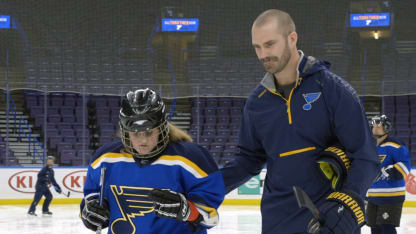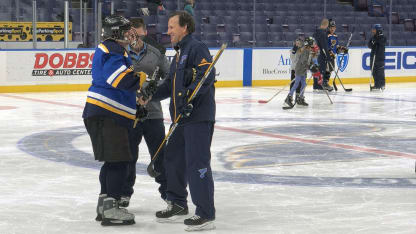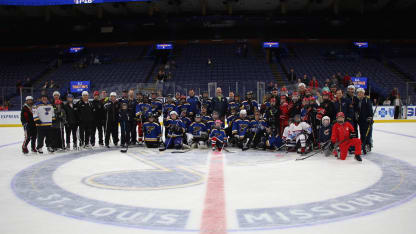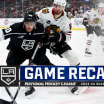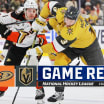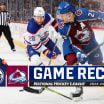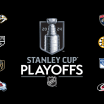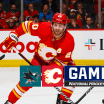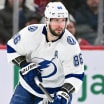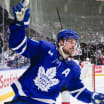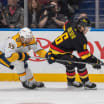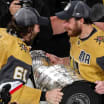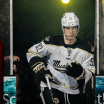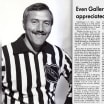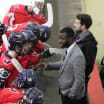"There's a wide range in terms of vision loss, and the other thing is, there's a really wide range in terms of exposure to hockey. We had some people out there who had never been on skates before," Zimmerman said. "The things that were remarkable were the courage to put yourself in that situation, particularly if you haven't skated and have had complete vision loss. And just the wonderful thing about it is to see a bit of joy that we saw in the people getting to experience this. We had men and women, we had a wide range of ages."
Each player on the team is legally blind, his or her spectrum of sight ranging from 10 percent to totally blind. Lowest-vision skaters are defensemen or goaltenders. More sighted athletes, like Thomas, are forwards. Their puck weighs the same as a regular puck but is bigger (5.5 x 2 inches), is metal and contains ball bearings which rattle to help players track it.
"You have guys, low vision to blind, they're tapping the floor, looking for the puck and it has that battlefield kind of feeling when you're out there," said Thomas, who relies on his hearing to locate the puck when it's more than 10 feet away from him. "It's kind of cool."
Coach Jeff Vann said the program has been inspiring.
"It's very rewarding to see somebody -- even a young kid who learns to play over a period of many, many years - to watch them grow and become better and better over time. To do it with someone with a disability like blindness, it makes it that much more rewarding to see them be successful," Vann said. "It's not only the game of hockey but the community that is being developed among this group of people. They're becoming friends and that, to me, is just as rewarding for us to go out and play the games."
